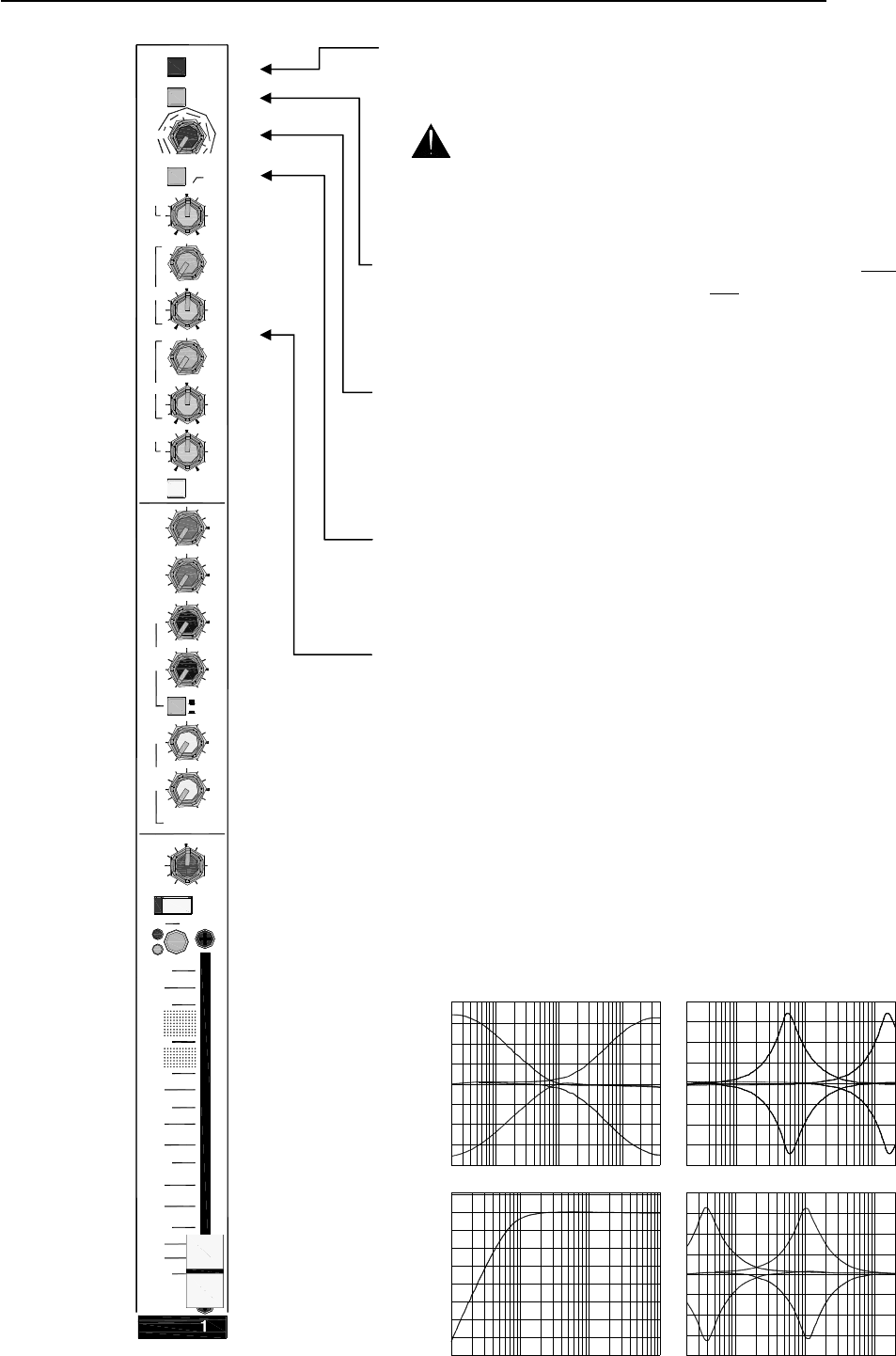User Manual

Allen & Heath 15 WZ
4
16:2 and 12:2 User Guide
The MONO Input Channel
+48V Switches +48VDC to the channel input XLR for powering micro-
phones or DI boxes that need phantom power. The power is current
limited through 6k8 ohm resistors to pins 2 and 3.
WARNING: Do not connect unbalanced sources or ca-
bles to inputs with phantom power selected. To avoid loud
clicks always mute the channel before switching +48V on or off
and when plugging or unplugging microphones.
PAD (LINE) Press this switch to select the channel TRS jack LINE in-
put. Release the switch to select the XLR MIC input. The XLR normals
through the TRS socket. With nothing plugged into the line input the
switch therefore becomes a PAD for the mic XLR. It attenuates the input
signal by 20dB for connection to high level microphone or line sources.
GAIN Adjusts the input sensitivity to match the connected source to
the internal 0dBu operating level of the channel. Provides a variable 50dB
range from +10 to +60dB gain (mic), or -10 to +40dB (line, pad selected).
The gain should be set using PFL so that the console meters average ‘0’
with loudest moments lighting ‘+6’. Reduce gain if the red peak indicator
lights.
HPF Switches in the channel high pass filter. This attenuates frequencies
below 80Hz by 12dB per octave. The filter is pre-insert, pre-EQ. Select
the HPF to reduce low frequency noise such as microphone popping, stage
noise and tape transport rumble.
EQ A 4-band semi parametric EQ provides independent control of four
frequency bands. HF and LF are shelving filters which affect high frequen-
cies above 12kHz, and low frequencies below 80Hz respectively. HM and
LM are bell shaped peak/dip filters which affect frequencies around a cen-
tre point which can be swept from 500Hz to 15kHz and 35Hz to 1kHz
respectively. These have a width (Q) of 1.8. All bands can be boosted or
cut by up to 15dB and have a centre detent 0dB position.
Check for the best microphone selection and placement before using the
EQ. Start with the EQ set flat and apply only as much boost or cut as is
really needed. The EQ IN button can be used to compare the EQ with a
flat response. When dealing with problem frequencies cut rather than
boost where possible.
180
45
35Hz
70
400
1k
250
(LINE)
3k
700
500Hz
1k
6k
15k
4k
HPF
+48V
PAD
SIG
10
5
0
5
10
30
20
+6
+6
+6
+6
1
AUX
2
AUX
3
4
AUX
AUX
PRE
+6
+6
RL
PFL
MUTE
5
AUX
AUX
6
PAN
PK!
POST
POST
10- 10
GAIN
20
0
4060
50
40
30
HF
HM
LM
LF
EQ IN
OO
OO
OO
OO
OO
OO
OO
20k10k5k2k1k5002001005020
-20
-15
-10
-5
0dB
+5
+10
+15
+20 +20
+15
+10
+5
0dB
-5
-10
-15
-20
20 50 100 200 500 1k 2k 5k 10k 20k
10k5k2k1k500200100502010
-40
-35
-30
-25
-20
-15
-10
-5
0dB
+5
20k10k5k2k1k5002001005020
-20
-15
-10
-5
0dB
+5
+10
+15
+20










